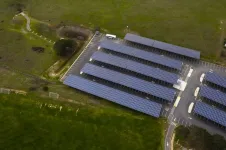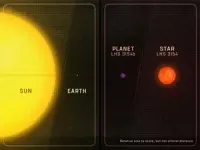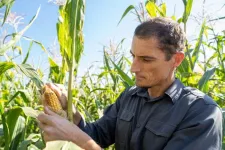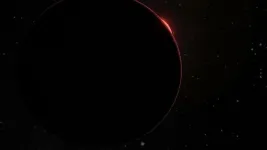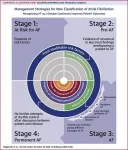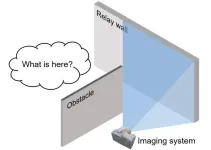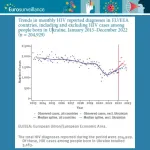(Press-News.org) It’s a story that’s become all too familiar — high winds knock out a power line, and a community can go without power for hours to days, an inconvenience at best and a dangerous situation at worst. UC Santa Cruz Assistant Professor of Electrical and Computer Engineering Yu Zhang and his lab are leveraging tools to improve the efficiency, reliability, and resilience of power systems, and have developed an artificial intelligence (AI) -based approach for the smart control of microgrids for power restoration when outages occur.
They describe their new AI model and show that it outperforms traditional power restoration techniques in a new paper published in the journal IEEE Transactions on Control of Network Systems, a top journal in the field of control systems and network science. Shourya Bose, a Ph.D. student in Zhang’s lab, is the paper’s first author.
“Nowadays, microgrids are really the thing that both people in industry and in academia are focusing on for the future power distribution systems,” Zhang said.
In many communities, infrastructure and its users are totally reliant on a local power generating utility company for electricity. This means that in the case of a disaster or extreme weather event, or even just a tree falling on a line, power goes out until repairs can be made.
Today, many electricity systems are smart in that they are interconnected with computers and sensors. They often incorporate local renewable energy sources such as rooftop solar panels or small wind turbines, and some households and buildings rely on backup generators and/or energy batteries for their electricity demand.
This mix of power sources presents an opportunity to address outages locally by using alternative energy sources to provide electricity before upstream power is restored. One way to do this is with a microgrid, which distributes electricity to small areas such as a few buildings or a town — although the size of the microgrid can vary.
The microgrid can be connected to the main power utility source, but also can function while disconnected in “islanding mode,” self-supported by alternate energy sources and unaffected by the issues impacting the main utility. Zhang’s research team focuses on optimizing how microgrids pull from these various alternate sources such as renewables, generators, and batteries to restore power quickly and correctly.
“Essentially, we want to bring the power generation closer to the demand side in order to get rid of the long transmission lines,” Zhang said. “This can improve the power quality and reduce the power losses over the lines. In this way, we will make the grid smaller, but stronger and more resilient.”
To optimally operate microgrids, Zhang’s lab developed an AI-based technique called deep reinforcement learning, the same concept that underpins large language models, to create an efficient framework that includes models of many components of the power system. Reinforcement learning depends on rewarding the algorithm for successfully responding to the changing environment — so an agent is rewarded when it is able to successfully restore the demanded power of all components of the network. They explicitly model the practical constraints of the real-world system, such as the branch flows that power lines can handle.
“We’re modeling a whole bunch of things — solar, wind, small generators, batteries, and we're also modeling when people's electricity demand changes,” Bose said. “The novelty is that this specific flavor of reinforcement learning, which we call constrained policy optimization (CPO), is being used for the first time.”
Their CPO approach takes into account real-time conditions and uses machine learning to find long-term patterns that affect the output of renewables, such as the varying demand on the grid at a given time and intermittent weather factors that affect renewable sources. This is unlike traditional systems which often use a technique called model predictive control (MPC) that bases decisions simply on the available conditions at the time of optimization.
For example, if the CPO method predicts that the sun will shine brightly in an hour, it would use up its supply of solar energy with the knowledge that it will later be replenished – a different strategy than it might take if the day was cloudy. It can also learn about the system based on long-term patterns of how the grid uses solar.
The researchers found that their CPO technique significantly outperforms traditional MPC methods when the forecasts of renewable sources are lower than the reality because of its better understanding of all the possible solar profiles throughout any given day.
They also found that the reinforcement learning controller is able respond much faster than traditional optimization methods in the moment of a power outage.
The research team recently proved the success of their method when they placed first in a global competition that invited participants to use reinforcement learning or similar techniques to operate a power grid. The competition, called L2RPN Delft 2023, was co-sponsored by France’s electricity transmission system operator (Réseau de Transport d'Électricité), which the UC Santa Cruz researchers see as an indicator that now large-scale grid operators may start moving toward AI and renewable energy techniques.
Now that they’ve developed a successful algorithm in simulations, the research team is working to test their model on microgrids in their lab. In the long-term, the researchers hope to implement their solution on the UC Santa Cruz campus’s energy system to address outage issues that the residential campus community faces. They also hope to see further interest and collaboration from industry.
END
Smart microgrids can restore power more efficiently and reliably in an outage
UC Santa Cruz engineers developed an AI model that optimizes the use of renewables and other energy sources to restore power when a main utility fails
2023-11-30
ELSE PRESS RELEASES FROM THIS DATE:
Unsafe lead levels in school drinking water: new UMass Amherst study IDs building risk factors
2023-11-30
AMHERST, Mass. – University of Massachusetts Amherst civil and environmental engineers have determined the factors that may help identify the schools and daycare centers at greatest risk for elevated levels of lead in drinking water. The most telling characteristic for schools in Massachusetts is building age, with facilities built in the 1960s and 1970s—nearly a third of the facilities tested—at the greatest risk for having dangerously high water lead levels.
There is no safe exposure ...
Chinstrap penguins asleep thousands of times per day, but only for seconds at a time
2023-11-30
In the wild, nesting chinstrap penguins get more than 11 hours of sleep per day – but not all at once. According to a new study, these birds nod off thousands of times per day, but for only around 4 seconds at a time, cumulatively accruing their daily sleep needs while remaining continuously vigilant over their nests. Sleep seems to be ubiquitous throughout the animal kingdom. Typically characterized by immobility and the relative loss of ability to sense and respond to the surrounding environment, sleep can render animals vulnerable to predation. In humans, insufficient sleep can lead to nodding off, the seconds-long interruption of wakefulness by eye closure, and sleep-related ...
A Neptune-mass exoplanet found closely orbiting a very low-mass M dwarf star
2023-11-30
The discovery of a Neptune-mass exoplanet orbiting the very low-mass M dwarf star LHS 3154 challenges theoretical models of planet formation, according to a new study. The planet, which has a mass at least 13 times that of Earth, tightly orbits a star 9 times less massive than the Sun, demonstrating that small stars can sometimes host larger planets than was previously thought. Planets form in the dense circumstellar discs of gas and dust that surround newborn stars. The amount of material in these structures determines how massive the planets that form ...
Two teosintes made modern maize
2023-11-30
Broad genetic sampling of maize and its teosinte grass ancestors reveals evidence of wild admixture during the crop’s initial domestication and dispersal, according to a new study. The findings clarify the contentious origin of modern maize and raise new questions about the anthropogenic mechanisms underlying its spread throughout the Americas. The domestication of crops transformed human culture. For many crops, the wild plants that modern domesticates are most closely related to can be readily identified by morphological and genetic similarities. Yet, despite its global agricultural importance, the ancestry of modern maize has long ...
A mixed origin made maize successful
2023-11-30
Maize is one of the world’s most widely grown crops. It is used for both human and animal foods and holds great cultural significance, especially for indigenous peoples in the Americas. Yet despite its importance, the origins of the grain have been hotly debated for more than a century. Now new research, published Dec. 1 in Science, shows that all modern maize descends from a hybrid created just over 5000 years ago in central Mexico, thousands of years after the plant was first domesticated.
The ...
Discovery of planet too big for its sun throws off solar system formation models
2023-11-30
UNIVERSITY PARK, Pa. – The discovery of a planet that is far too massive for its sun is calling into question what was previously understood about the formation of planets and their solar systems, according to Penn State researchers.
In a paper published online today (Nov. 30) in the journal Science, researchers report the discovery of a planet more than 13 times as massive as Earth orbiting the “ultracool” star LHS 3154, which itself is nine times less massive than the sun. The mass ratio of the newly found planet with its host star is more than 100 times higher than that of Earth and the sun.
The finding reveals the most massive known ...
Early rhythm control, lifestyle modification and more tailored stroke risk assessment are top goals in managing atrial fibrillation
2023-11-30
The American College of Cardiology (ACC) and the American Heart Association (AHA), along with several other leading medical associations, have issued a new guideline for preventing and optimally managing atrial fibrillation (AFib). The guideline was jointly published today in the Journal of the American College of Cardiology and Circulation.
Atrial fibrillation, or AFib, is the most common type of heart rhythm disorder (arrhythmia), affecting over 6 million Americans, and the number is expected to double by 2030. AFib causes a variety of symptoms, including fast ...
Carbon dioxide becomes more potent as climate changes, study finds
2023-11-30
Embargoed: Not for Release Until 2:00 pm U.S. Eastern Time Thursday, 30 November 2023.
A team of scientists found that carbon dioxide becomes a more potent greenhouse gas as more is released into the atmosphere.
The new study, led by scientists at the University of Miami Rosenstiel School of Marine, Atmospheric, Science, was published in Science and comes as world leaders meet in Dubai, United Arab Emirates, this week for the United Nations Climate Change Conference COP28.
“Our finding means that ...
Researchers extend non-line-of-sight imaging towards longer wavelengths
2023-11-30
WASHINGTON — Emerging technologies for non-line-of-sight imaging can detect objects even if they are around a corner or behind a wall. In new work, researchers use a new type of detector to extend this method from visible light into near and mid-infrared wavelengths, an advance that could be especially useful for unmanned vehicles, robotic vision, endoscopy and other applications.
“Infrared non-line-of-sight imaging can improve the safety and efficiency of unmanned vehicles by helping them detect and navigate around obstacles that are not directly visible,” said Xiaolong Hu from Tianjin University in China. His team collaborated with a group ...
EU/EEA: HIV diagnoses rise for the first time in a decade
2023-11-30
Across the 30 countries of the European Union and European Economic Area (EU/EEA), 22,995 new HIV diagnoses were reported in 2022. Almost every second new HIV diagnosis (49%, n=11,103) was among migrants, i.e. among people who were not born in in the country they were diagnosed in. born abroad from the country of their diagnosis.
In the aftermath of Russia’s invasion of Ukraine in 2022, more than 4 million Ukrainians took refuge in countries of the European Union and European Economic Area (EU/EEA). In a rapid communication published in Eurosurveillance prior to World AIDS Day 2023 on 1 December, Reyes-Urueña et al. look at most recent surveillance data ...
LAST 30 PRESS RELEASES:
Quantum simulator sheds light on how nature moves energy in systems like photosynthesis and solar conversion
Can a hashtag help prevent atrocities? Study shows social media can be a powerful tool
The American Ornithological Society (AOS) announces the winner of the 2025 Wesley Lanyon Award
Woolly rhino genome recovered from Ice Age wolf stomach
An earthquake on a chip: New tech could make smartphones smaller, faster
New research shows how AI tools are expanding individual capabilities while contracting scientific attention
A nanomaterial flex — MXene electrodes help OLED display technology shine, while bending and stretching
Global research team uncovers mechanism by which metabolites guide cellular decisions
Work hours, stress, and burnout among resident physicians
Quality of life of parents of premature infants
Should younger and older people receive different treatments for the same infection?
Scientists discover how fast the world’s deltas are sinking
Scientists demonstrate first-time use of AI for genetic circuit design
Copenhagen researchers make the front page of Nature: Solving the mystery of the universe's ‘little red dots’
Seoul National University-Drexel University team achieves world's highest efficiency fully stretchable OLEDs with 17% external quantum efficiency
Hydrogel cilia set new standard in microrobotics
Application of orthogonal CNOP-I in a convection-allowing ensemble prediction system based on CMA-MESO for improving extreme precipitation skill
Study suggests bamboo has ‘superfood’ potential
Hidden heart-care gaps among Asian American patients
Blood test predicts which patients with lung cancer will benefit from newly approved immunotherapy drug
SwRI’s Dr. Michael Davis named SPIE Fellow
Exposure to “forever chemicals” linked to higher risk of gestational diabetes, major review finds
Insilico Medicine integrates Nach01 Foundation Model with Microsoft Discovery to enable AI-native, enterprise-ready drug discovery workflows
New study reveals precursors for forecasting summer clustered extreme precipitation events in Northeast China
A bacterial toxin can counteract colorectal cancer growth
Frozen hydrogen cyanide ‘cobwebs’ offer clues to origin of life
Physics of foam strangely resembles AI training
Bis-pseudoindoxyls: a new class of single benzene-based fluorophores for bioimaging applications
Blocking a cancer-related pathway helps reduce spine deformities due to genetic disorder, finds new study
New study explores therapeutic potential of CRISPRCas3 genome-editing system
[Press-News.org] Smart microgrids can restore power more efficiently and reliably in an outageUC Santa Cruz engineers developed an AI model that optimizes the use of renewables and other energy sources to restore power when a main utility fails
